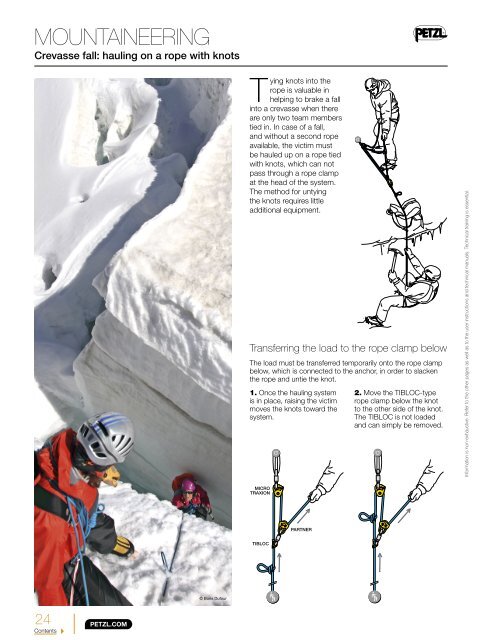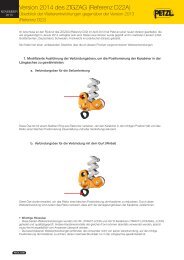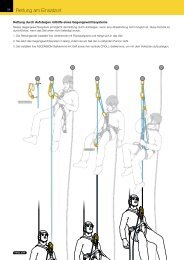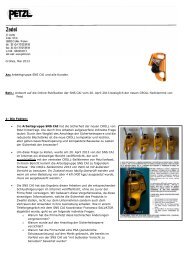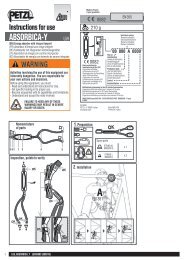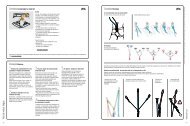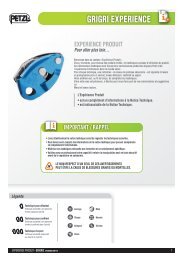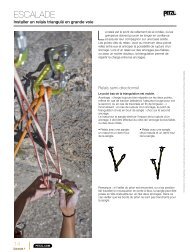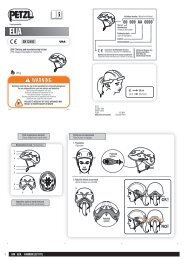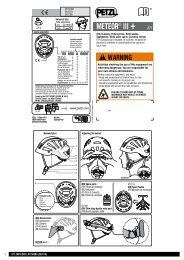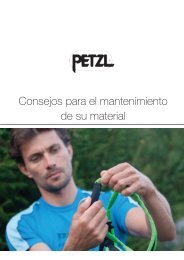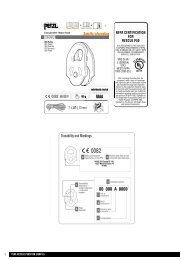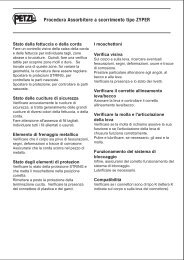Create successful ePaper yourself
Turn your PDF publications into a flip-book with our unique Google optimized e-Paper software.
MOUNTAINEERING<br />
Crevasse fall: hauling on a rope with knots<br />
24<br />
Contents<br />
© Boris Dufour<br />
Tying knots into the<br />
rope is valuable in<br />
helping to brake a fall<br />
into a crevasse when there<br />
are only two team members<br />
tied in. In case of a fall,<br />
and without a second rope<br />
available, the victim must<br />
be hauled up on a rope tied<br />
with knots, which can not<br />
pass through a rope clamp<br />
at the head of the system.<br />
The method for untying<br />
the knots requires little<br />
additional equipment.<br />
Transferring the load to the rope clamp below<br />
The load must be transferred temporarily onto the rope clamp<br />
below, which is connected to the anchor, in order to slacken<br />
the rope and untie the knot.<br />
1. Once the hauling system<br />
is in place, raising the victim<br />
moves the knots toward the<br />
system.<br />
MICRO MICRO<br />
TRAXION TRAXION<br />
TIBLOC TIBLOC<br />
PARTNER PARTNER<br />
2. Move the TIBLOC-type<br />
rope clamp below the knot<br />
to the other side of the knot.<br />
The TIBLOC is not loaded<br />
and can simply be removed.<br />
MICRO<br />
TRAXION<br />
TIBLOC<br />
Information is non-exhaustive. Refer to the other pages as well as to the user instructions and technical manuals. Technical training is essential.


